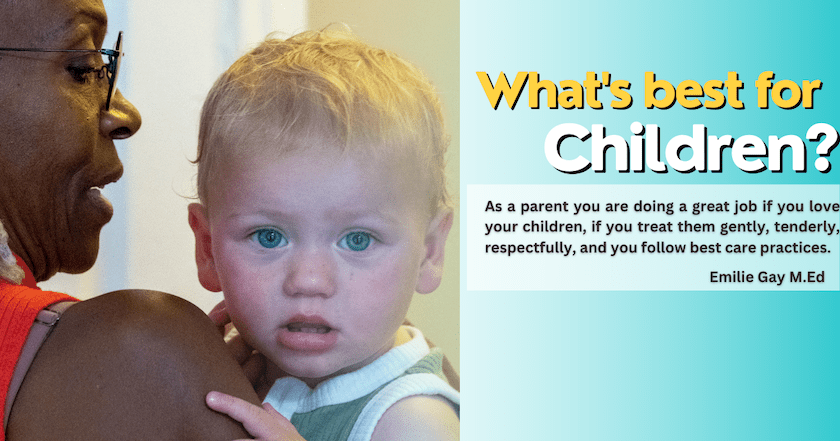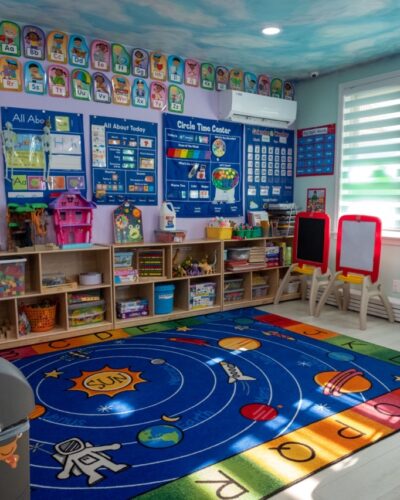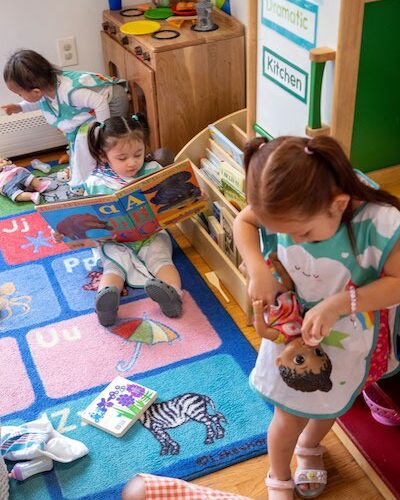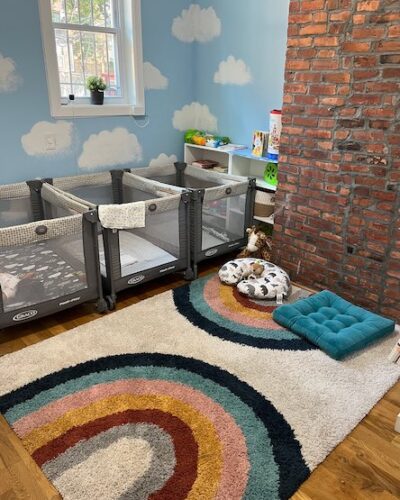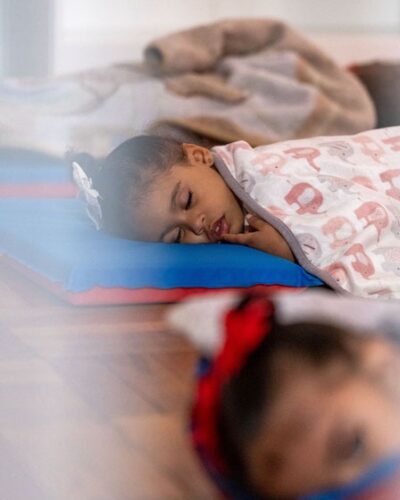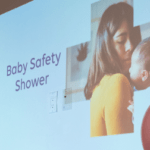Some parents worry about putting their child (from birth to age three) into a childcare program. By this post’s conclusion, we hope that we have relieved that worry. In this post we will discuss the different types of care for children from birth to three years old and what types are best.
Some parents worry about putting their child (from birth to age three) into a childcare program. By this post’s conclusion, we hope that we have relieved that worry. In this post we will discuss the different types of care for children from birth to three years old and what types are best.
Research shows that keeping your children at home versus sending them to childcare programs can have the same effect on your child. 80% of children in England, Canada, and France are put into childcare programs and respond positively. This research shows that it’s not whether you keep your child at home or you put them into a care program that matters. The quality of the care is what’s most important.
So what is the best type of care for your infant to three-year-old? And how do we determine the quality of that care?
First, know that as a parent you are doing a great job if you love your children, if you treat them gently, tenderly, respectfully, and you follow best care practices.
Think of the seed of an oak tree. Within that little seed are all of the instructions that seed needs to grow into a great oak tree. They need no instruction on how to become a grand majestic tree. All they need is soil, water, and sunshine.
Infants are like seeds. Children are capable of walking, talking, and engaging with the world around them. They have curiosity, persistence and energy. This is all they need. Like the oak seed, we need to give them the appropriate environment for all of those capabilities to be not only expressed but explored.
The family unit is the learning environment that nature created for infants. The majority of what children learn from birth to age three is discovered through observation and by imitating those around them. In a family unit, there are people of different ages and different abilities. Because of this, there is no one standard or expectation of the child’s behavior. The child can develop as they are called to. In a family unit, the infant usually gets one-on-one care, which bonds them to one individual. The bonded experience is so important. It gives the developing child a sense of security and connection that makes them feel safe to explore their environment and abilities.
In families, necessary rules are set by a trusted person. Rules are the guidelines for how to interact with others and the world around us. Of course you could have some dysfunctional family units in which children have not developed a safe bond with someone. Because of this, they will be negatively impacted. But when we talk about quality care, the family unit is the model we try to adhere to.There are two types of care programs that children can be placed in: center-based care or group family care. The majority of what children from birth to age three learn is through observing how other people behave. Because observation is an essential part of growth, a mixed age environment is important for children from infancy to three years old.
That’s why we say that whether you keep your children at home or put them in a care program, the bottom line is the quality of that care. A setting that best represents a family dynamic where the child gets the one-on-one care and attention is imperative. Not only this, but a place where they are exposed to people of different ages and abilities helps the child develop their own abilities without the pressure of meeting one set standard. We think the best place for young children is in the group family provider homes rather than a preschool setting.
Now, let’s talk about what a preschool setting looks like and what a group family home looks like so you can understand how these dynamics impact children. A preschool setting is like a classroom with little chairs, tables, and learning materials. In each classroom, the children are the same age which is because it is easier to care for children who you assume have the same needs. They eat at the same time, go to the bathroom at the same time, and sleep the same amount of time—except for the children who may sleep a little less or a little more than their peers. That is the preschool setting.
The Group Family Providers home is a mixed age group. This provider’s program could have a child that’s three months old, a child that’s 18 months old, and two children that are 24 months old. This mixed age group grants children the opportunity to observe people with different skills and capabilities. They don’t have to be pressured to meet any external standards. In mixed aged groups, the caregiver cannot assume that the children have the same needs so they must cater to the individual. A three-month-old will be hungry, need to be changed, and want to sleep at different times than a 24-month-old. The whole day has to be organized around each child’s specific needs which mimics a family unit’s environment.
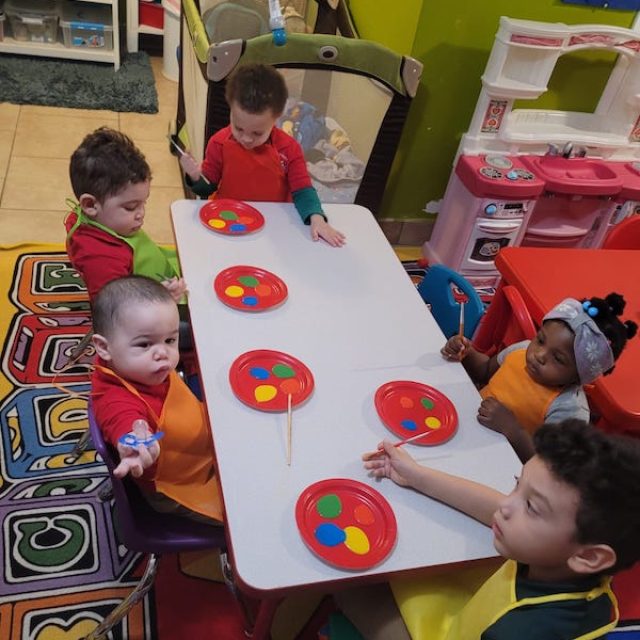
In any setting, the bottom line is quality. There can be a low-quality group family childcare program that will have negative outcomes. The same goes for a low-quality center program and a dysfunctional family. Those outcomes won’t be good, either. Quality will always be the defining component, whether it concerns a group family childcare program, a center program, or a family unit.
What is quality childcare? Our belief at the Flourishing Children and at Program Support Family Childcare Network is that quality childcare has three components. The three components which include Respectful Care, Free Movement, and Free Play. Respectful Care recognizes the child’s humanity when we feed them, change them, pick them up—really, when we do anything with the child. Conducting any care routine means that we are interacting with a whole person who feels, thinks, and emotes.
Free Movement is about allowing the child to move freely at their own pace. Emmi Pikler says that if we allow children to move freely, they will develop and be able to move as gracefully as gazelles. The third one is Free Play, which allows the children uninterrupted playtime free of adult intervention.
A lot of parents feel like they have to entertain their children. We believe that care routines are the time when parents have one-on-one engagement with children that is loving, caring, and respectful. In Free Movement, the children are allowed to move as they wish. We don’t put them in bouncy chairs. We don’t strap them down in anything. Movement is so necessary because we know that physical development and brain development are directly connected. In free play, children can entertain themselves. They have the capacity to be curious and move freely; to talk, to run, to crawl, and to jump. As caregivers, we need to give them the environment to do all of these things. We need to give them the soil, the water, and the sun to grow. Our aim is to make sure your children grow into the strong healthy tree that they are meant to be.

